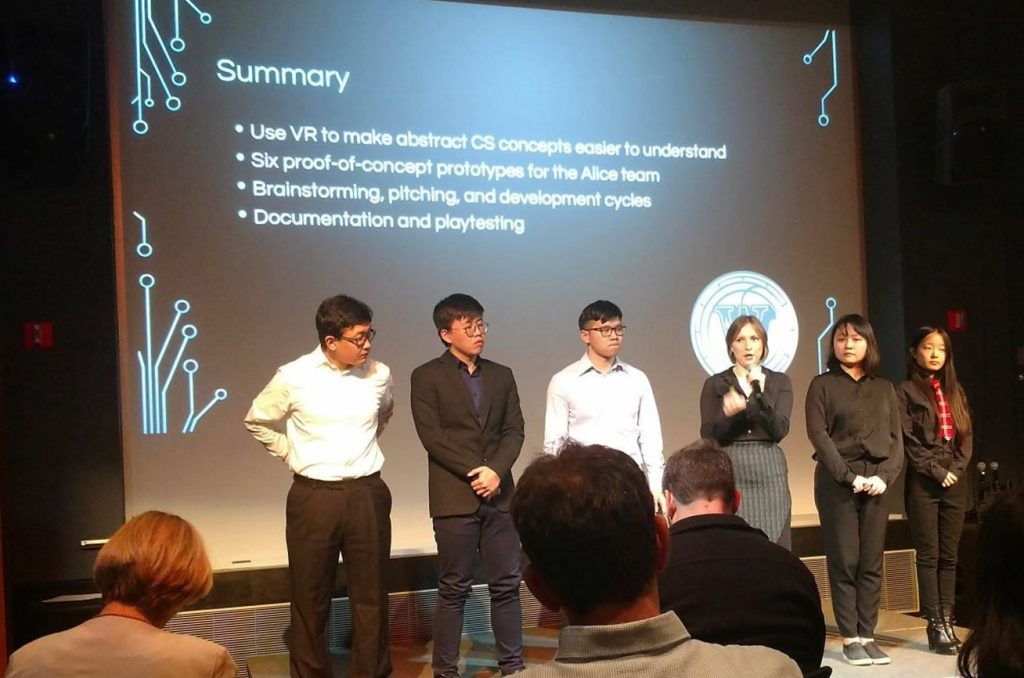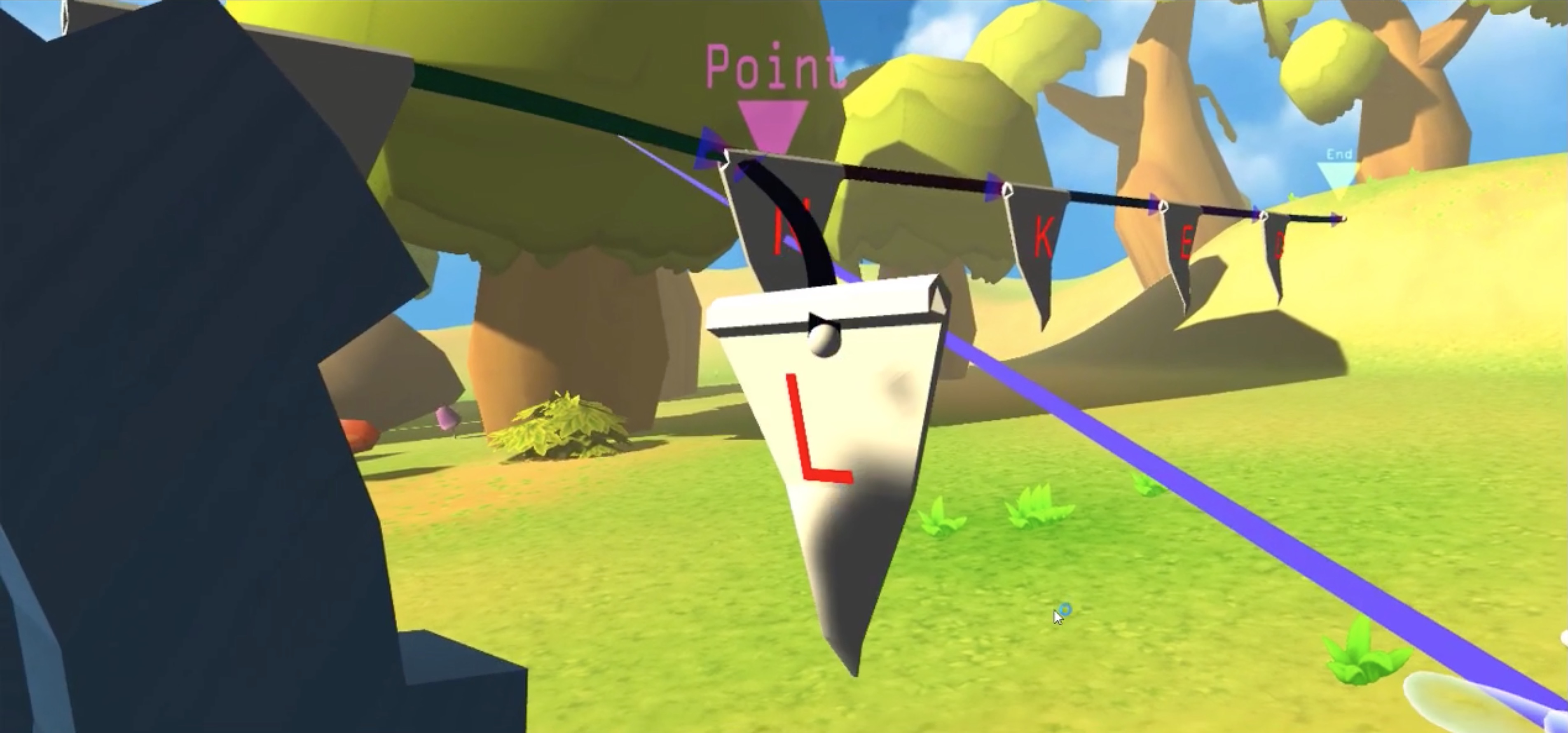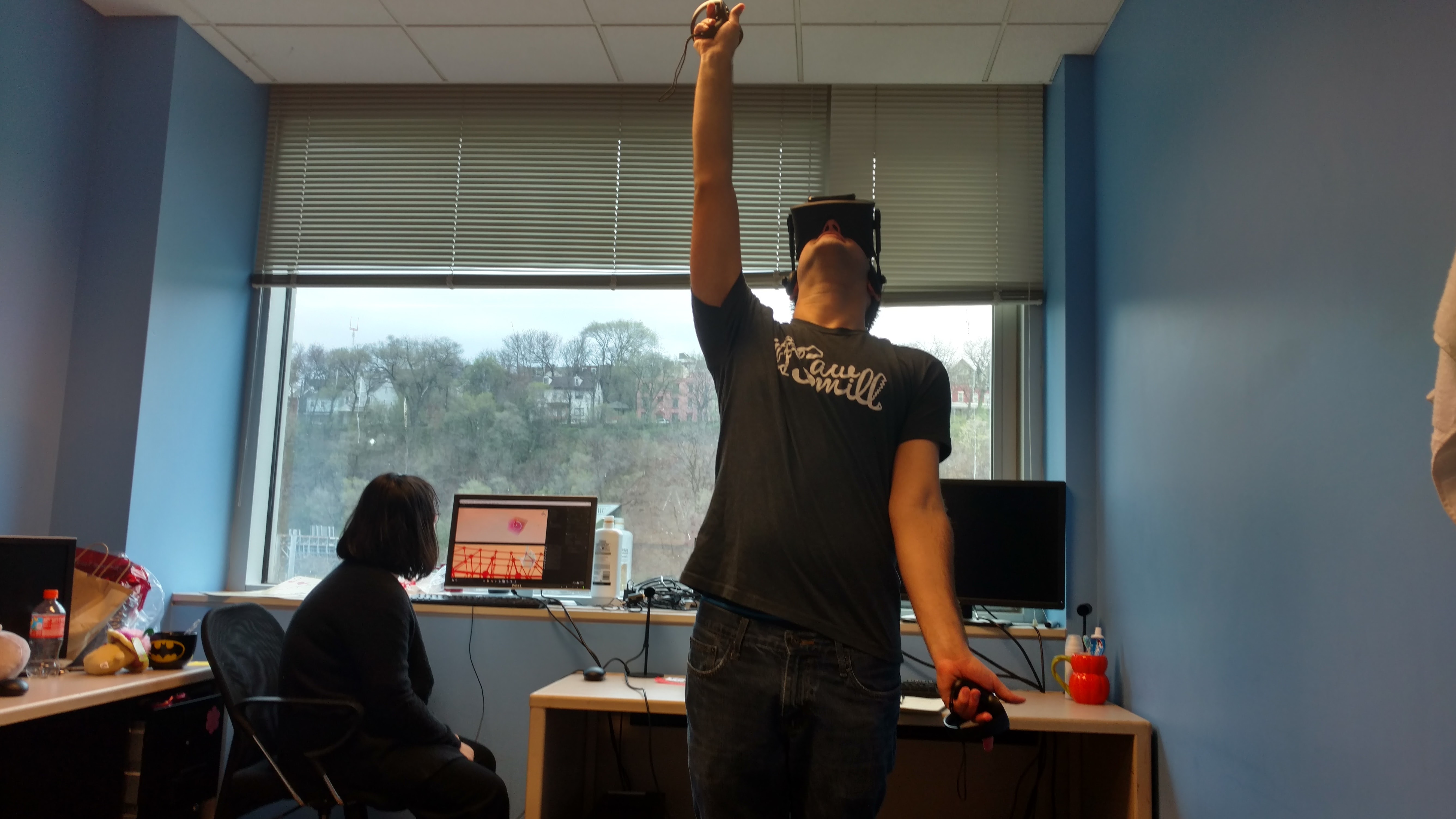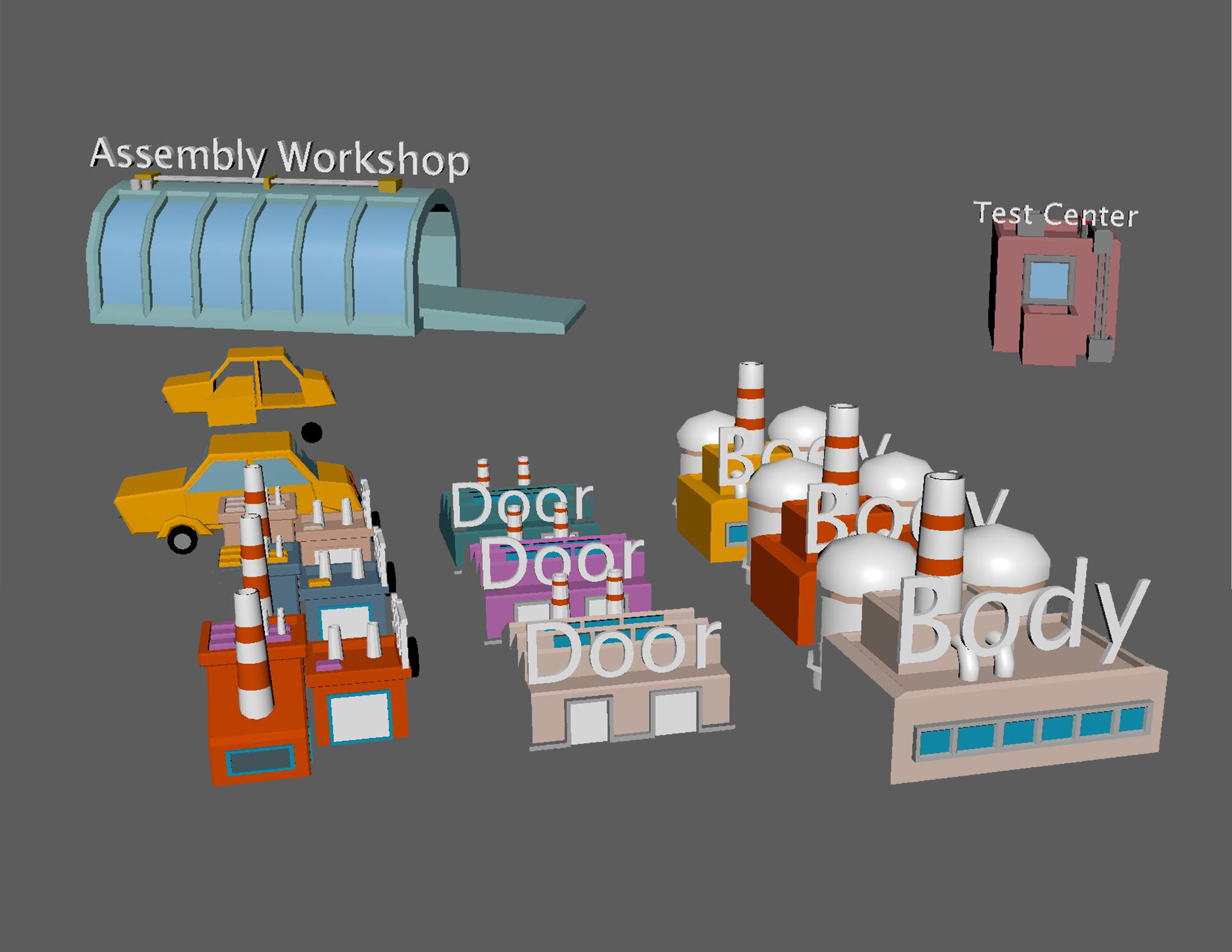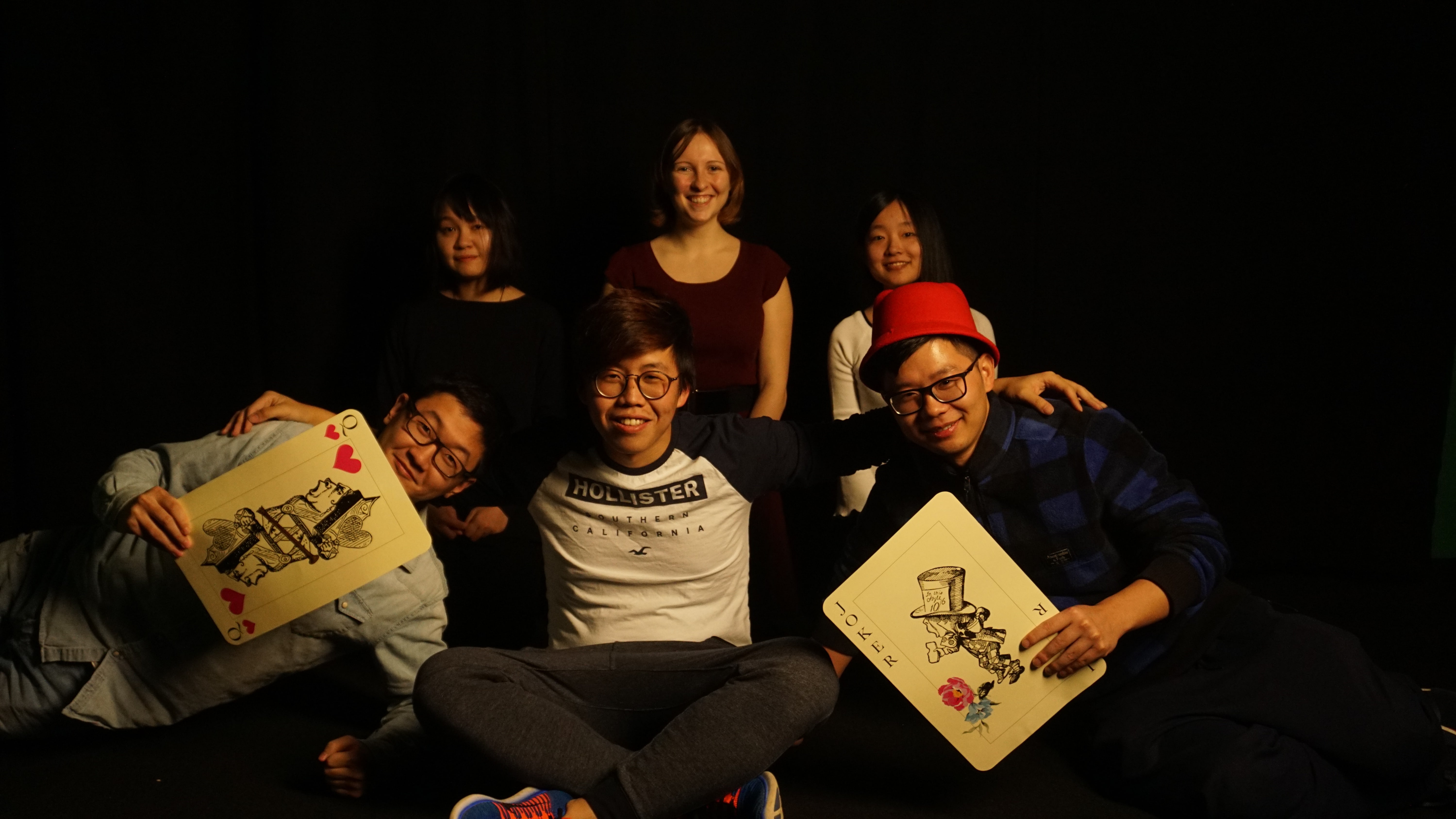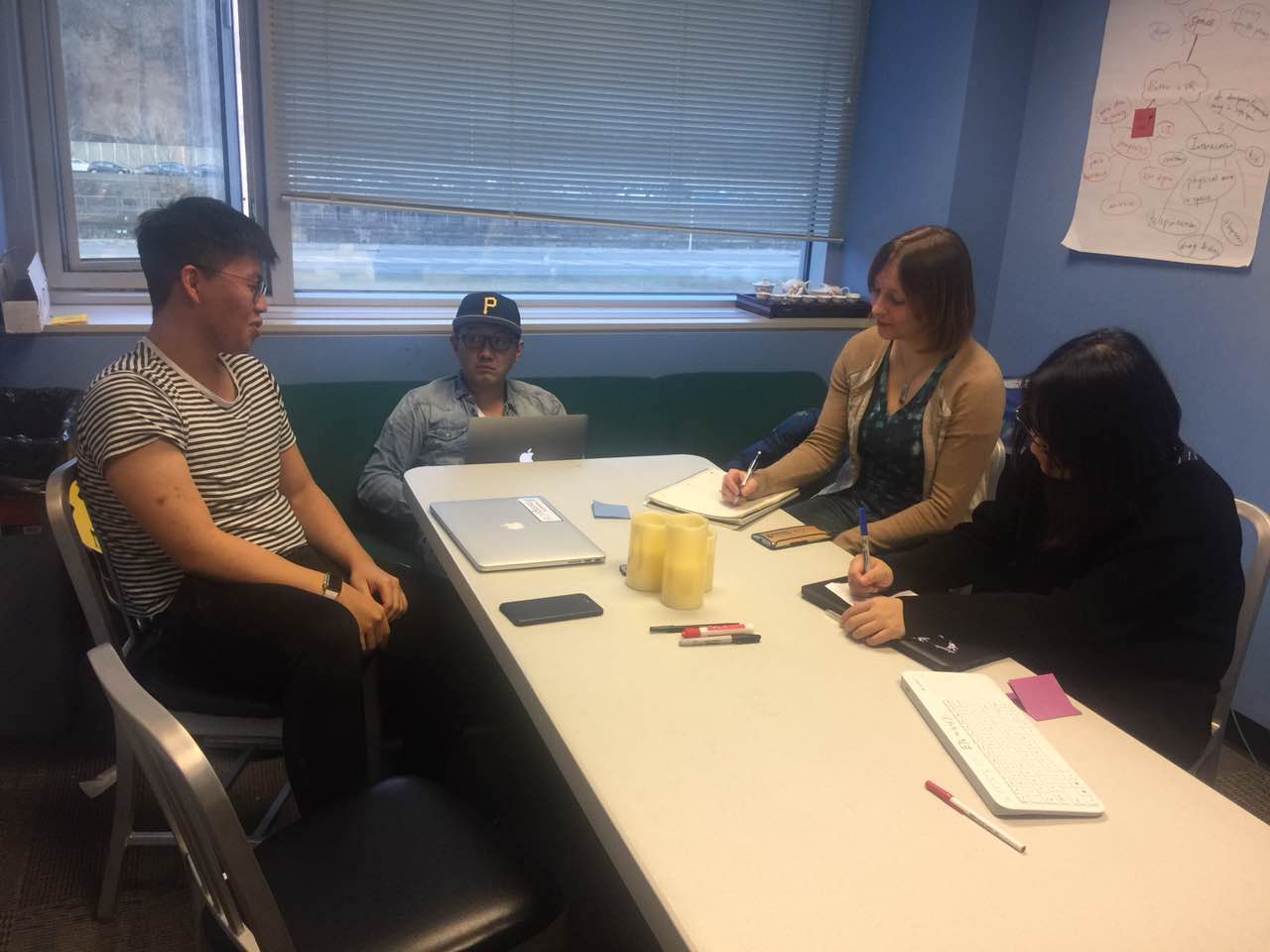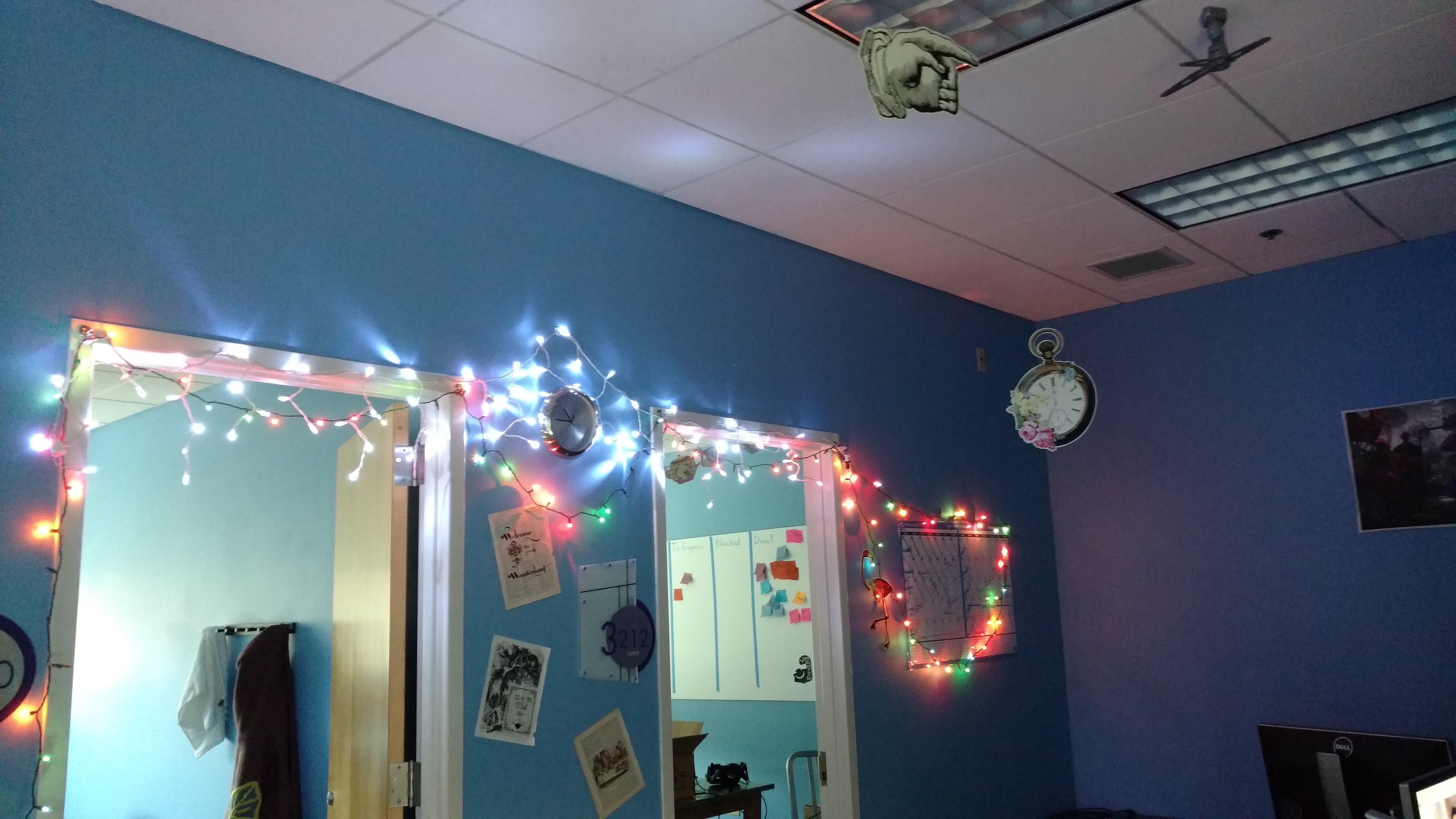 This was a crazy week for us here in Wonderland. We were not only adjusting to being back from spring break, but we also started meeting with local computer science and technology instructors to start getting some feedback on the potential for these sorts of experiences to function as educational tools, as well as preparing for our half semester presentation to faculty.
This was a crazy week for us here in Wonderland. We were not only adjusting to being back from spring break, but we also started meeting with local computer science and technology instructors to start getting some feedback on the potential for these sorts of experiences to function as educational tools, as well as preparing for our half semester presentation to faculty.
Development
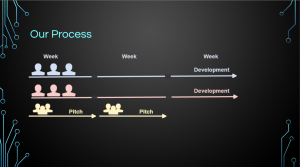 This week marked a major shift in our development schedule. We were finding that our two-week cycles did not leave enough time for iteration based on the feedback we were getting, so we did not have chances to really solve the problems we were running into. Additionally, because we were rushing to develop these prototypes in such short time frames, we were not taking the time to create thoughtful, reasonable designs before building them, which would alleviate a lot of the problems we have been running into. Therefore, we made the choice to pull back from eight prototypes to six, which allows us to extend our development cycles to three weeks each. That means we did a bit of iteration on the Buggy Factory and Flying Flags prototypes this week instead of starting two new ones.
This week marked a major shift in our development schedule. We were finding that our two-week cycles did not leave enough time for iteration based on the feedback we were getting, so we did not have chances to really solve the problems we were running into. Additionally, because we were rushing to develop these prototypes in such short time frames, we were not taking the time to create thoughtful, reasonable designs before building them, which would alleviate a lot of the problems we have been running into. Therefore, we made the choice to pull back from eight prototypes to six, which allows us to extend our development cycles to three weeks each. That means we did a bit of iteration on the Buggy Factory and Flying Flags prototypes this week instead of starting two new ones.
Buggy Factory
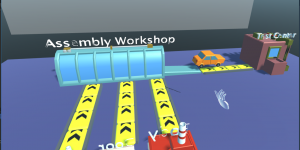 For the Buggy Factory prototype, our small development team got stuck a bit stuck on the design improvements. Our instructors and client were not satisfied with the teaching potential of this prototype, since the player in the prototype could possibly just repetitively perform the same action to win the game. Nick realized that we would probably need something to build contrast against modular programming practice, but that if we build the monolithic programming example into the game, the player would forced through the bad practices before the good ones. This makes it less like a game than a video, and that is not what we are going for.
For the Buggy Factory prototype, our small development team got stuck a bit stuck on the design improvements. Our instructors and client were not satisfied with the teaching potential of this prototype, since the player in the prototype could possibly just repetitively perform the same action to win the game. Nick realized that we would probably need something to build contrast against modular programming practice, but that if we build the monolithic programming example into the game, the player would forced through the bad practices before the good ones. This makes it less like a game than a video, and that is not what we are going for.
After talking with one of our instructors, Nick decided to shift the design direction of the game. Instead of teaching the benefit of modular programming, we plan to teach the benefit of unit testing. The player will be presented a buggy factory line, and will be given two options: 1. add a testing unit after the car is produced 2. add separate testing units to each individual component. With such design, the player can learn the need and the benefit of the unit testing. If the player doesn’t perform unit testing, the car produced will need to be rebuilt. However, if the player follows the unit testing practice, unqualified components will be filtered out before being sent to the assembly factory. This will make the production line work without stopping.
With this new design, we hope that players can learn the benefit and the need to perform unit testing by figuring out how to make the car production line work best.
Flying Flags
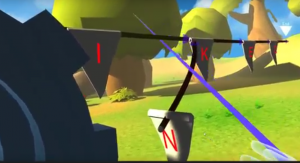 For this prototype, we focused on fixing the bugs that were coming up at the end of last week, as well as making some minor modifications to the user interface of the game. We shifted the position of the flags from the center of each rope to the end and added arrows to the far end of each rope to clarify the connection between the ropes and the pointers in a linked list. We also added indicators for the start and end of the list so make it easier to keep track of, and again to strengthen the connection between the experience and the topic.
For this prototype, we focused on fixing the bugs that were coming up at the end of last week, as well as making some minor modifications to the user interface of the game. We shifted the position of the flags from the center of each rope to the end and added arrows to the far end of each rope to clarify the connection between the ropes and the pointers in a linked list. We also added indicators for the start and end of the list so make it easier to keep track of, and again to strengthen the connection between the experience and the topic.
Playtesting
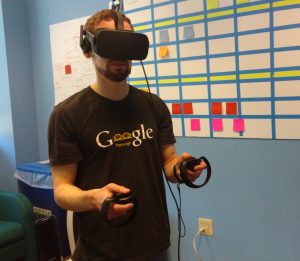 We’re very excited to have started showing these prototypes to computer science and technology instructors around CMU! We really appreciate these teachers taking time out of their schedules to meet with us and give us some feedback on the prototypes. So far the reception has been quite positive, and we’re optimistic about the potential for virtual reality experiences like these to enhance computer science curriculum, both by providing learning moments and practice and by getting students excited about the prospects of learning computer science.
We’re very excited to have started showing these prototypes to computer science and technology instructors around CMU! We really appreciate these teachers taking time out of their schedules to meet with us and give us some feedback on the prototypes. So far the reception has been quite positive, and we’re optimistic about the potential for virtual reality experiences like these to enhance computer science curriculum, both by providing learning moments and practice and by getting students excited about the prospects of learning computer science.
During the play tests we got really good suggestions, like adding the ability for teachers to control the experience themselves and collecting back-end data collection that will help measure the students’ understanding of the concepts. We also observed that simple but impressive experiences have stronger impacts than we expected, which made Luna think that leaving some space for creativity will help users repeatedly recall and use the knowledge they’ve learned, thus reinforcing the memory. Also, high levels of curiosity may have a great impact on the students’ intentions to figure things out.
Half Semester Presentation
The bulk of our time this week was spent preparing and rehearsing our half-semester presentation, where we show the highlights of what we’ve done so far, along with our plan for the rest of the semester. It was difficult to compress everything we’ve learned up until now about ourselves as a team and about developing virtual reality for education into a fifteen minute presentation, but ultimately we created a presentation that we felt showed our strengths and improvements, and we as a team feel good about how it went.